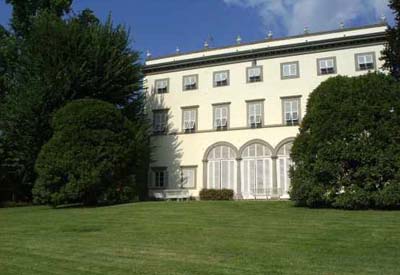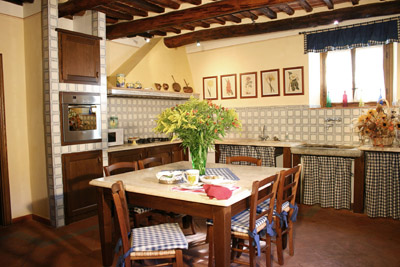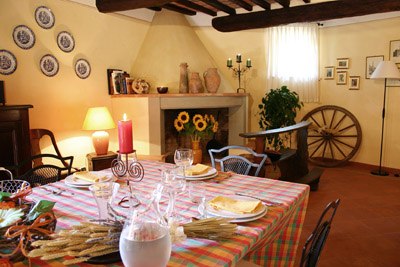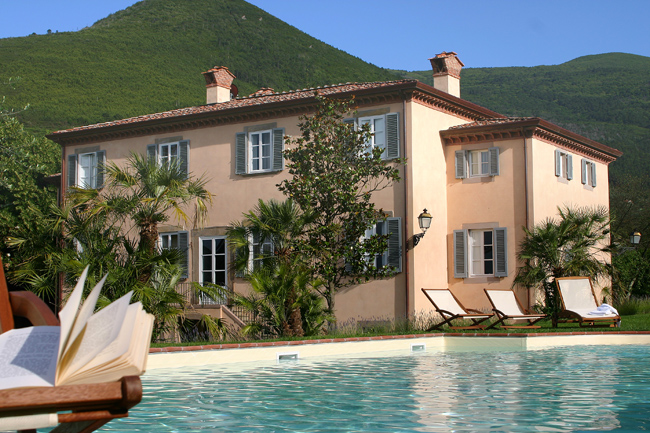
Villa Grabau at San Pancrazio
Villa Grabau is one of the first forms of villa settlement in the hills north of Lucca. Recent research has shown how the villa owes its origins to the unification of severl properties carried out by the Diodati family from the 15th century. The information confirms that from this period the hills of Lucca were the subject of a series of land rearrangement operations, the use of the land, building work, expressions of new architectural layouts and new agricultural arrangements.
It is not yet known when the villa was transformed in the Reinaissnce style which is characterised by the portico in the facade, now closed in with glass. Important from the point of view of the landscape is the view which starts at the old Lucca road (now a country lane), follows the avenue leading to the park, crosses the villa and ends in the exedra of the garden behiand the villa. The transformation in neoclassical style, which took place at different times, is modelled on the nearby villa Principessa at Marlia.
The portico was closed in with large windows and dcorated internally with trompe l’oeil curtains. The park which is probably the same age as the villa, consists of several gardens. Its current form dates back to 1836 and the time when it was owned by the Cittadella family.
The botanical gardens extended along two sides of the central lawn and boasts a collection of plants from all parts of the world. Because of its rare exotic vegetation, the most extraordinary ection is the “English Garden”, dating back to the 19th century, where some majestic species can be admired. At the beginning of the 20th century some additions were carried out in the “Art Noveau” style which was popular at that time.
Along the west side of the villa, near the kitchens and stables, there is a small “Teatro di Verzura“, probably, inspired by the theatre at the nearby Villa Reale in Marlia; it was created during the 19th century with box hedges forming the wings of the stage; a spherical niche hides the prompt box. The entrance is guarded by two Renaissance lions in marble.
The garden behiand the villa, with the beautiful scenery of the hills in the background is a wide, semi-elliptical parterre, edged with tall hedges to form a green exedra with statues of Ceres, venus, Pomona and others.
The mosaics, made form rock crystals, quartz and tufa, cover the Matraia stone and white marble balustrade which separates the two levels. Shady paths connect the various areas of the park. Of particular interest is the large 17th-18th century lemon house, one of the most important and beautiful in the Lucchesia, which is still used to house the citrus plants during the winter.





